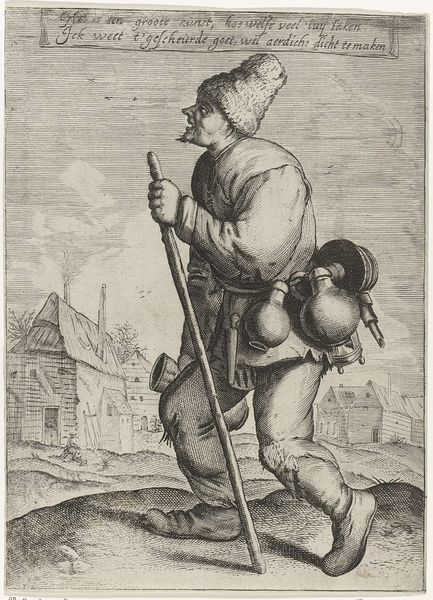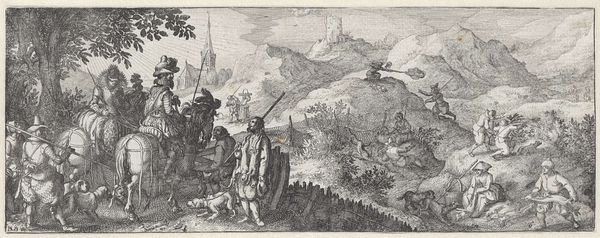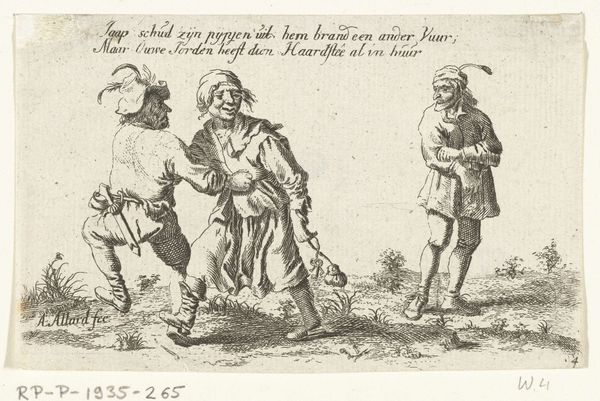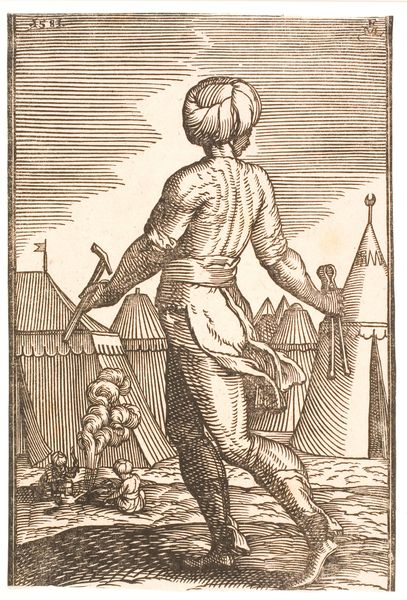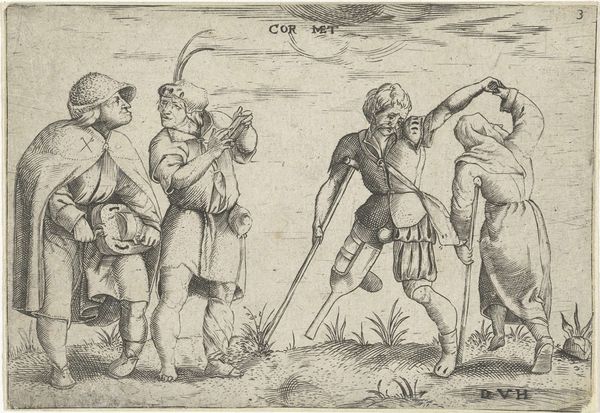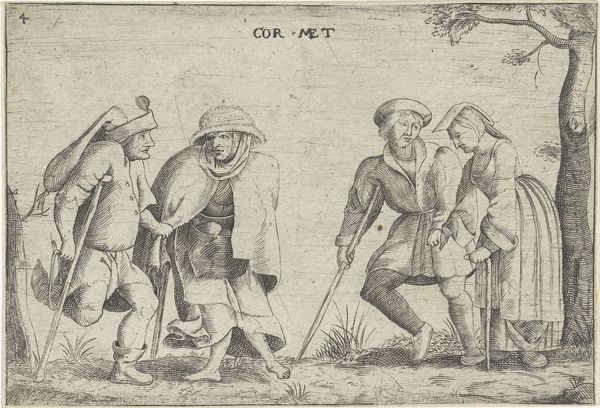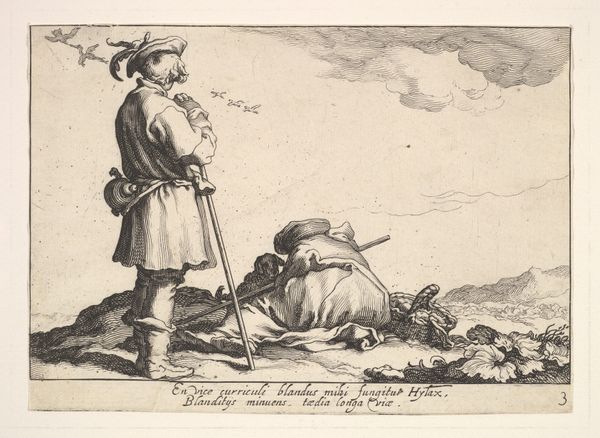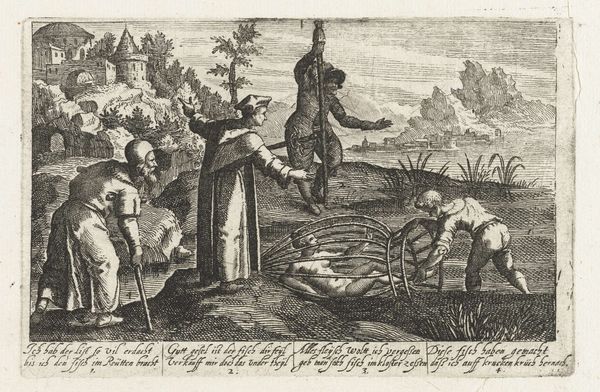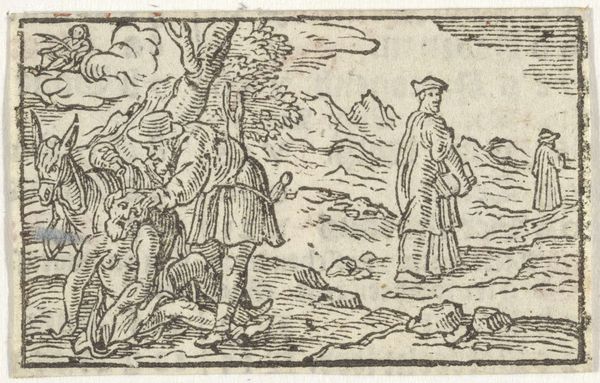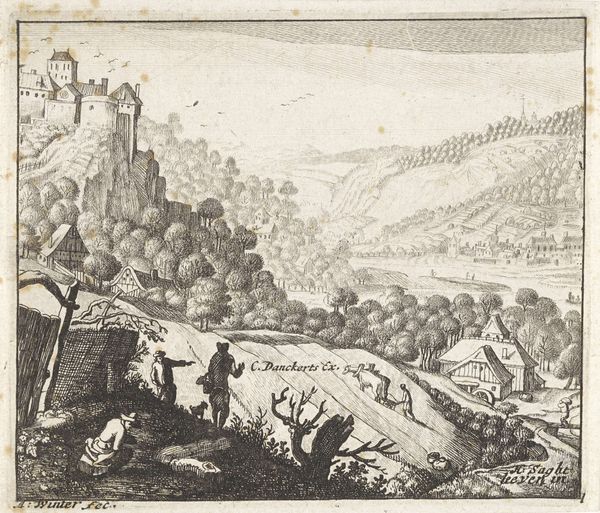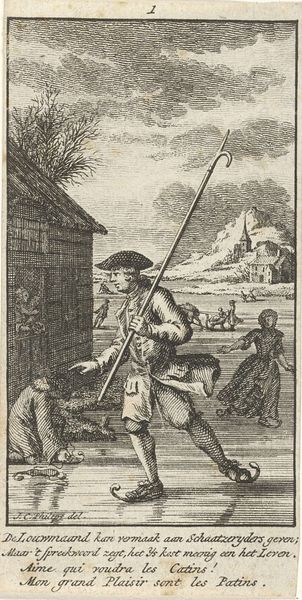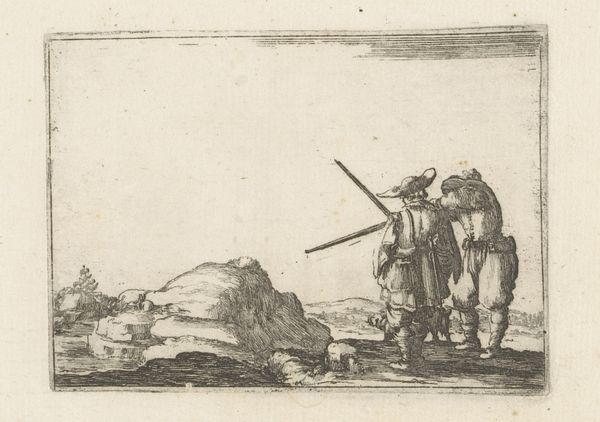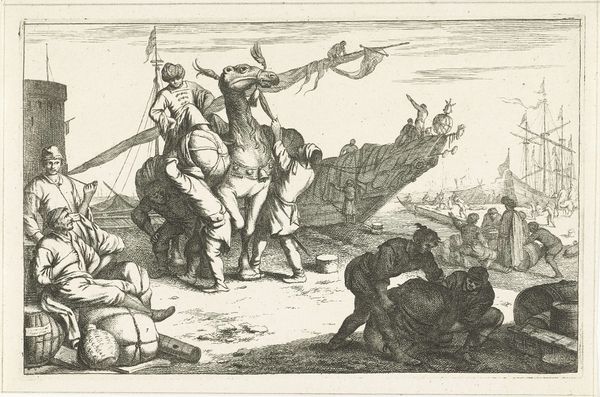
#
quirky sketch
#
mechanical pen drawing
#
pen sketch
#
personal sketchbook
#
sketchwork
#
pen-ink sketch
#
pen work
#
sketchbook drawing
#
storyboard and sketchbook work
#
sketchbook art
Dimensions: height 87 mm, width 160 mm
Copyright: Rijks Museum: Open Domain
Dirk Eversen Lons made this etching of a man in wambuis in a mountain landscape sometime in the 17th century. The image invites us to consider the relationship between the individual and the world around him. We see a well-dressed man standing in a landscape, his back turned to us. In the distance, we see a castle atop a mountain, a symbol of power and authority. Carriages and donkeys carrying goods suggest a world of commerce and trade. This was a period of great social and economic change in the Netherlands. The Dutch Republic was a major trading power, and its cities were centers of commerce and culture. This image seems to reflect the growing importance of the individual in Dutch society. The man in the wambuis is not a king or a nobleman, but a commoner. Yet he stands confidently in the landscape, as if he is master of his own destiny. To understand this image better, we might want to research the history of the Dutch Republic, the rise of the merchant class, and the changing role of the individual in society.
Comments
No comments
Be the first to comment and join the conversation on the ultimate creative platform.
